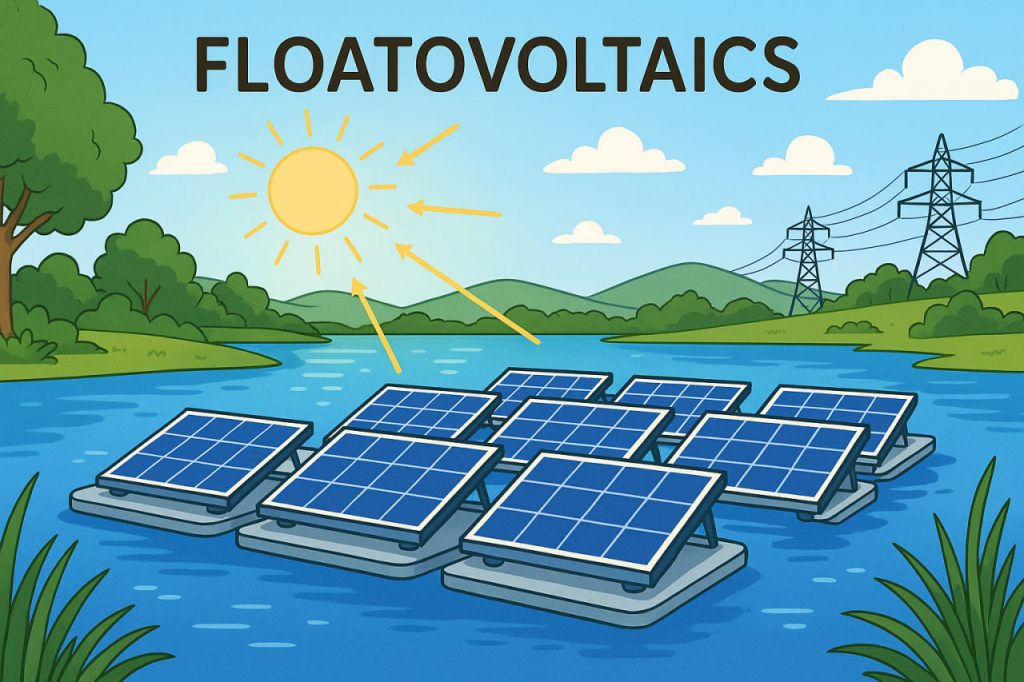Floatovoltaics—also known as floating solar power systems—represent one of the most promising innovations in the renewable energy sector. By installing solar panels on the surface of water bodies instead of land, this technology helps generate clean electricity while conserving space and reducing water loss. It’s an elegant solution for regions with limited land and high energy demands.
What Are Floatovoltaics?
Floatovoltaics are photovoltaic (PV) solar panels mounted on floating platforms, typically anchored on calm freshwater bodies like lakes, reservoirs, or irrigation ponds. The floating platforms are made of buoyant, UV-resistant materials that keep the solar modules secure and stable. These systems function similarly to land-based solar panels by converting sunlight into electricity through semiconductor materials.
What makes floatovoltaics unique is their dual interaction with both solar energy and aquatic environments.
Benefits of Floating Solar Systems
- Land Conservation
Floating solar avoids using valuable agricultural or urban land. This is particularly important in countries with limited free space or dense populations. - Improved Panel Efficiency
Water bodies cool the solar panels from below, which helps them operate more efficiently compared to those on hot rooftops or open fields. - Reduced Water Evaporation
By shading the water surface, floatovoltaics help reduce evaporation—especially valuable for reservoirs in arid regions. - Algae Growth Suppression
Less sunlight reaching the water limits algae blooms, which can harm water quality and aquatic life. - Scalability and Flexibility
These systems are modular and can be easily expanded depending on energy demand or available surface area.
Global Use and Notable Projects
Many countries have already embraced floatovoltaics:
- China leads the world in floating solar capacity, with several hundred megawatts deployed.
- Japan has pioneered installations on reservoirs near cities to save land.
- India is rapidly expanding its capacity, especially in southern states.
- In the United States, floating solar powers municipal water treatment plants and agricultural systems.
One of the largest projects is in Anhui Province, China, where a floating solar farm produces over 150 MW on a flooded coal mining site.
Environmental and Technical Considerations
Despite the many benefits, floatovoltaics also pose challenges:
- Installation and Maintenance Costs: Building stable floating structures and anchoring them requires careful engineering.
- Biofouling and Corrosion: Exposure to water can lead to the growth of organisms on equipment and accelerated material degradation.
- Ecological Impact: While surface coverage reduces evaporation, it may also affect aquatic ecosystems by reducing light penetration and oxygen exchange.
Proper site selection and sustainable design can help mitigate these effects.
Future Outlook
As the world pushes toward carbon neutrality, floatovoltaics offer a smart, scalable, and eco-friendly way to boost renewable energy capacity. Combining them with hydropower reservoirs or urban water bodies creates hybrid systems that maximize space and infrastructure.
With declining costs, improved technology, and supportive policies, floating solar could supply gigawatts of clean power in the coming decades—especially for nations with both water resources and limited land.
Glossary
- Photovoltaic (PV) Cell: A device that converts sunlight directly into electricity.
- Biofouling: The unwanted growth of algae or organisms on submerged surfaces.
- Carbon Neutrality: Achieving net-zero carbon dioxide emissions.
- Evaporation: The process by which liquid water becomes vapor and escapes into the air.


